
Anthony Karakas
-
Posts
20 -
Joined
-
Last visited
Content Type
Profiles
Forums
Articles
Gallery
Downloads
Events
Posts posted by Anthony Karakas
-
-
I'm wondering what you experienced smiths use to drift your tomahawk eyes over; a post leg vise, a swage block or something else?
Thank you,
Anthony
-
Just a quick update: i followed everyone's advice and easily punched through on some 7/8" stock. The big difference was using a dedicated punch (instead of the drift) and then flipping the piece over and punching out the pellet.
If only i had it centered! Came out a little lopsided, but the lesson has been learned!
Big thanks for all your help everyone!
-
Thanks for the info Alan!
-
Thanks Tdriack, on my next attempt i will drift it from one side, and then when i am close to the other side, i will flip it and punch from the bottom. The funny thing is, i used to do it that way! My problem is i've taken a few long layoffs from the forge, and i forgot about flipping the piece and punching from the bottom! So simple in hindsight, i am shocked i forgot such basic technique..
I am using the tomahawk mandrel from Kayne & Son. However, i am realizing that a perhaps a mandrel is not a slitter, or a punch...Should i be using one of those first to make the hole? And then later come thru with the mandrel?
-
Latticino, i only put the stock over the hardy hole when i'm almost all the way through..however, i have not been flipping the piece over and punching from the other side...that is a great idea!
Dogsoldat, i will research your suggestion...thank you!
-
-
Thanks Benton; in the case of leaf spring material, would this be for a "wrap around" style hawk where you forge weld the ends?
I just picked up some 7/8" 4140 steel round bar.
I have started the piece and shaped it, now i am ready to punch and drift the eye.
-
Thanks to all for your comments, input and wisdom

I will definitely be holding off on the A2 and D2...
I am just finishing my first hawk (without a cracked eye, that is) in 4140. Still need to heat treat and fit a handle.
-
Thomas, Yes i have, and no i have not. Is there a trick in forging air hardening steel?
What do you mean by "expensive"? The pieces i bought were practically free. Or am i missing your point?
-
I just came across a couple nice pieces of A2 and D2. Will these make a good hawk? Are they reasonable to heat treat, or should they be sent out for heat treating?
-
Hello,
I am curious as to what types of steel people are using to make a serviceable hawk without forge welding a high carbon bit. Further, are you able to do a home heat treat, or do you send it out for heat treat? Conversely, do some of you prefer to forge a bit into a mild steel body?
Thank you,
Anthony
-
Thank you all very much! I will get some bricks going and build it up!
-
I bought this forge one year ago. It is my first one. It has a clinker breaker, as seen in the photo. I've been using the forge, but i never use the clinker breaker. Now i am wondering if it blocks too much air and causes a cold spot in the middle of the fire pit? I also notice that sometimes coal just falls straight through the gaps. Should i be using the clinker breaker? Or is it minimizing air flow and hence heat? I would like to get more heat and spin the blower less.
Thank you
-
-
On 5/13/2016 at 4:55 PM, latticino said:
Ok thank you Homeshow!
Unfortunately that is almost completely backwards of what you should be doing. Many smiths who work exclusively with tool steel (bladesmiths) don't even have a slack bucket in their shops to avoid this temptation. Water quenching tool steel, particularly with strong variations in crossection is a recipe for cracks and surface microfractures. There are some tool steels and situations where water quenching is a prudent option, but with the steel you probably have and the work you are doing it is highly unlikely.
As others have already stated, slitting and drifting should be done quite hot (I don't bother drifting unless the stock is in the orange/yellow range, too much work otherwise. If it gets below cherry red you are asking for trouble, and remember the side in contact with the anvil will cool faster). Also you can try to forge down the sides of your blank around the drift on the anvil a bit rather than just forcing the drift through. This will raise cheeks on the side of the hawk around the opening, but these can either be a design element, or forged out as well.
Rounding corners of your drift will also help. I like the traditional teardrop crossection for hawks, but many different styles have been made historically.
-
Actually Navasky, i was doing just that on my latest attempt. I ran out of rr spikes, so i used a piece of 3/4 tool steel. After upsetting the piece to 4" (from 6.5") i punched and drifted the eye. Later as i was working on the body of the hawk, i started quenching the lower part of the hawk where the eye was located, under the belief that if i kept it cooler, it would not split or crack.
Unfortunately it did just that!
-
Daswulf and Nick, thank you both very much for the advice! I will file those sharp edges off and round them over. I never want to see a cracked eye again!
-
Here is a picture of the two tools that i used...Also, perhaps i did not make myself clear: the cracks did not happen while i was drifting the eyes. I noticed them later on after i had been forging the rest of the tomahawk. For that reason, i am wondering if it is better to do as much forging as possible of the Hawk, and then drift the eye as late as possible in the forging
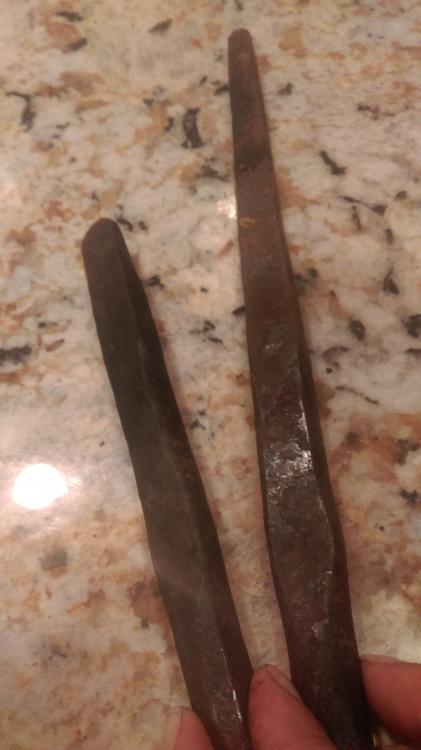 process?
process?
-
Hello,
These are some of my first tomahawk attempts. I keep having a recurring problem, which is the eyes keep cracking. I have been drifting the eyes early in the process, but now i am realizing, is it better to drift the eyes later in the forging process, thereby reducing eye damage during forging? Also, i am welcome to any and all advice that might help me along my way to producing a serviceable hawk. Thank you.
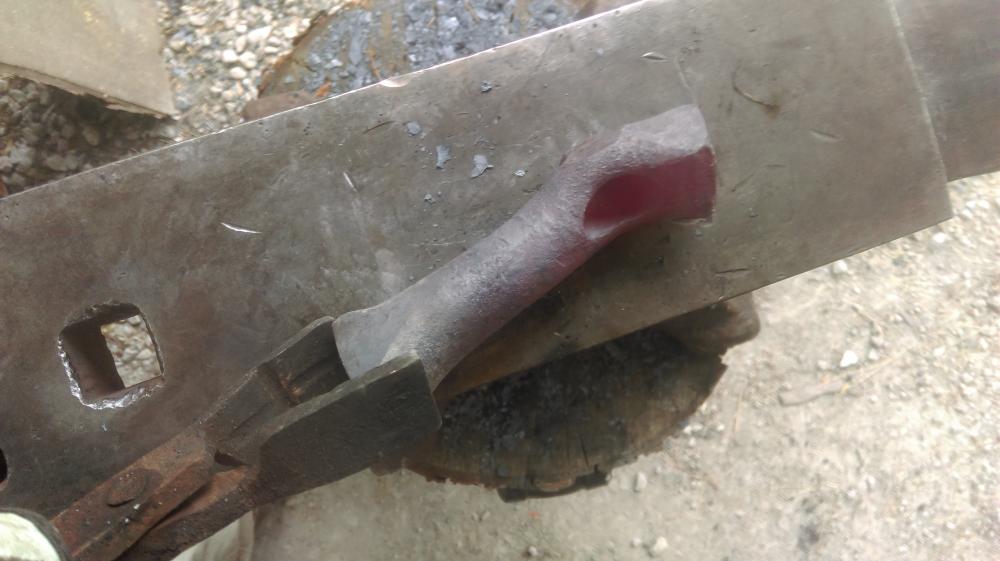
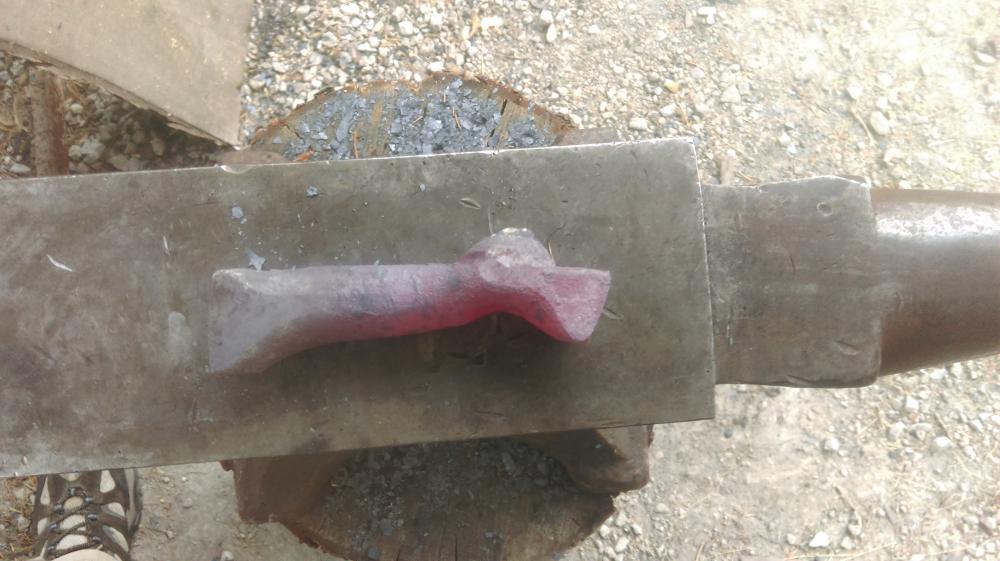
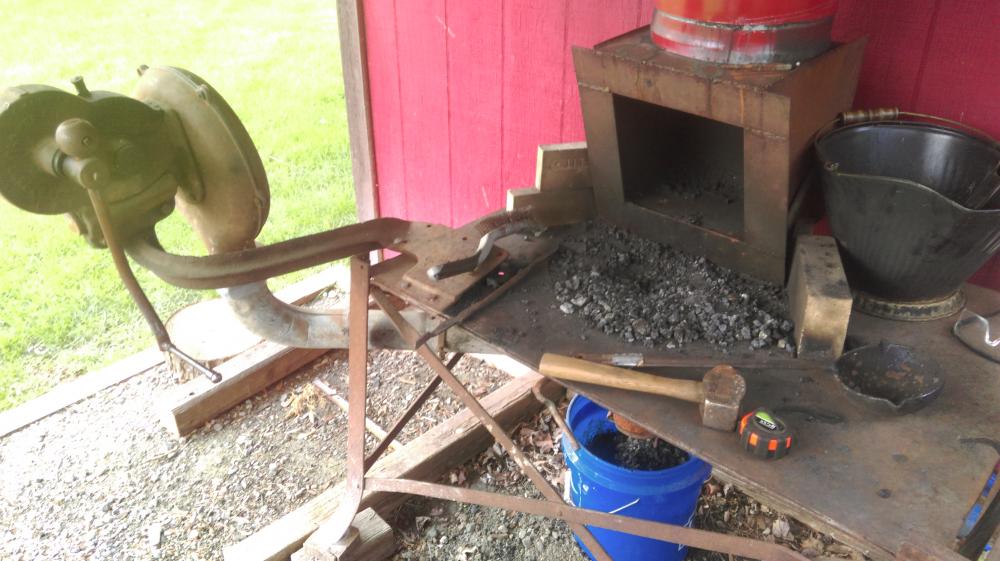
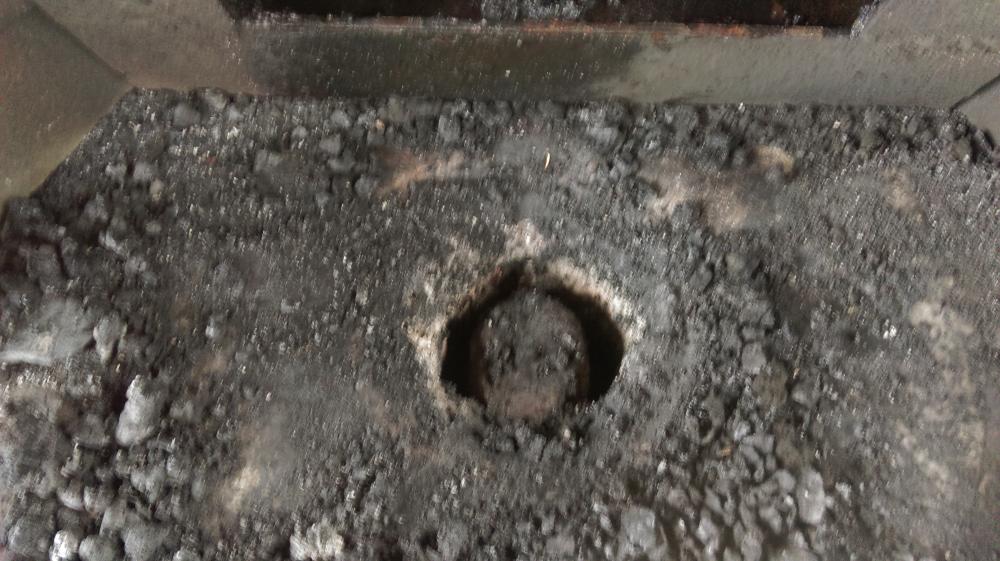
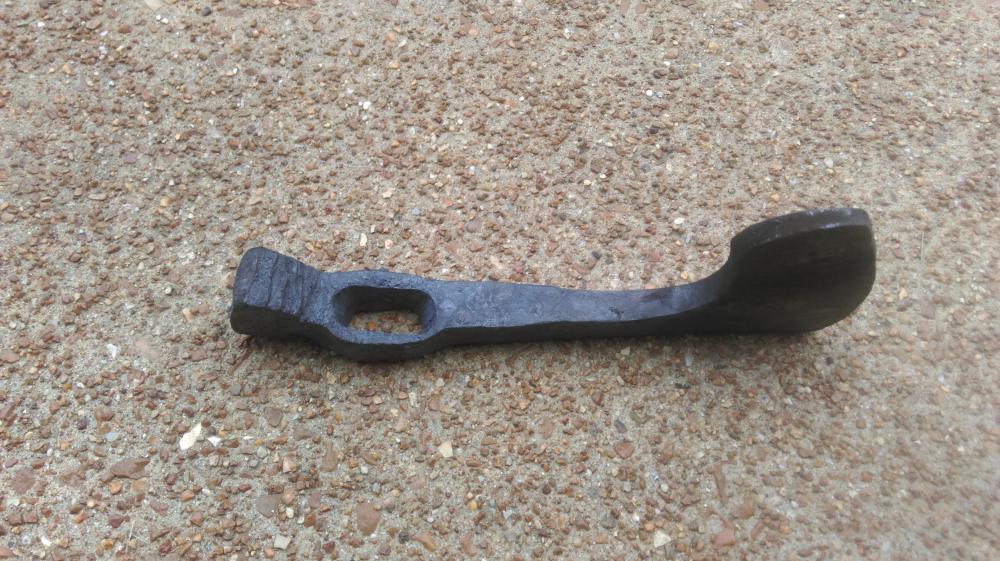
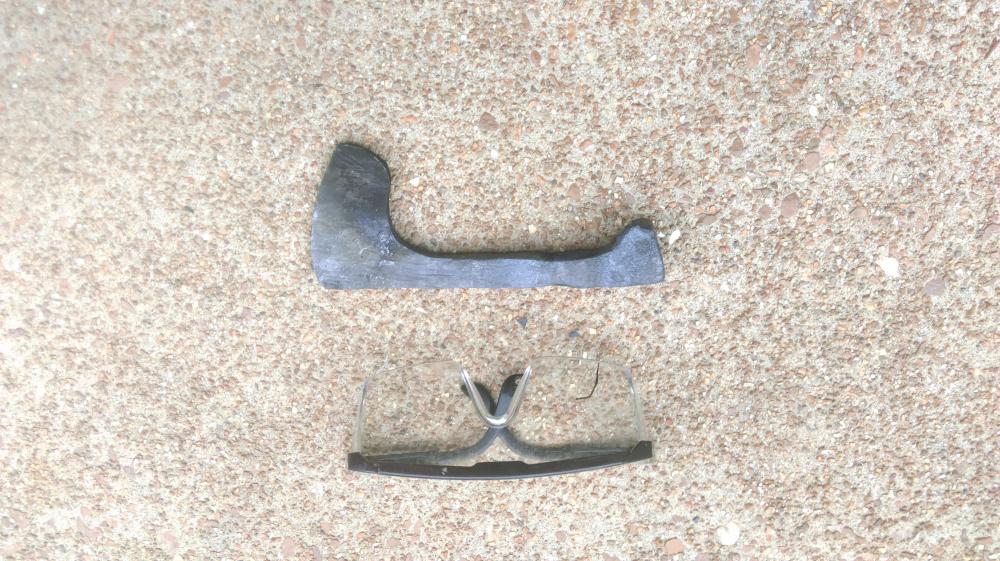
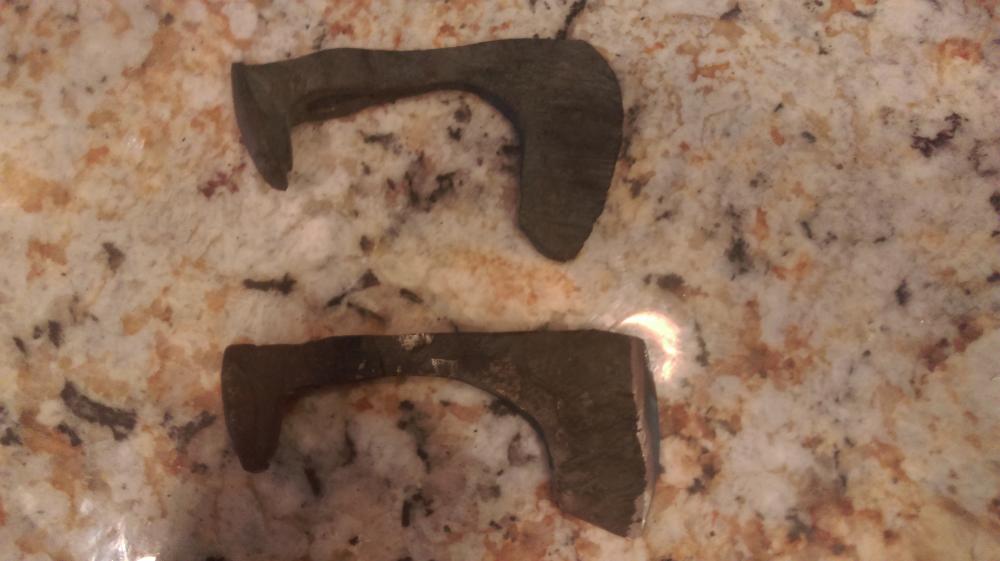
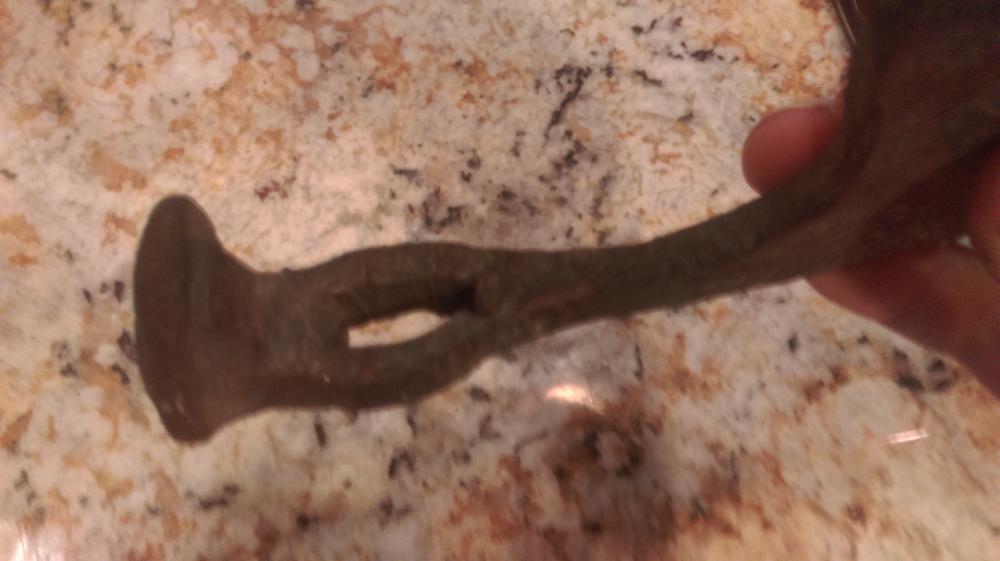
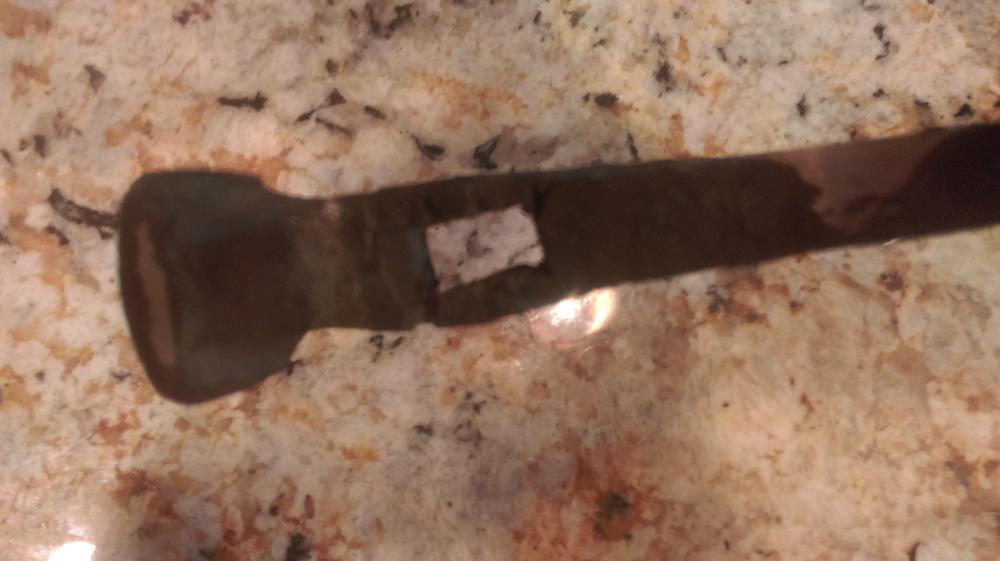
Preferred object to drift eyes over? Swage block or vise?
in Axes, Hatchets, Hawks, Choppers, etc
Posted
Alright thank you very much Littleblacksmith; that is what i suspected...and Jeremy K, i had briefly clicked on "chat", but did not know you could just step into a conversation with random questions...next time i will do so..